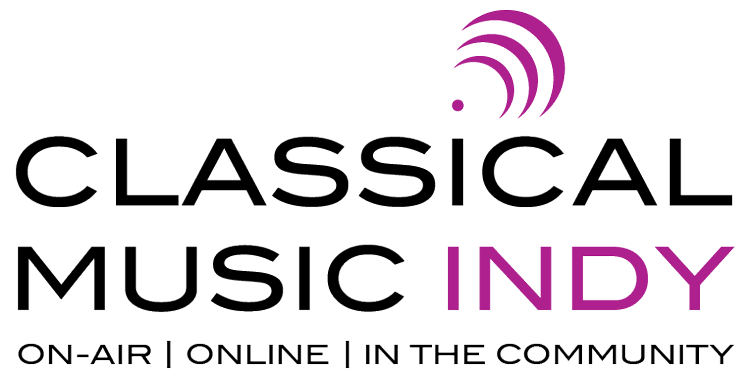For over two decades, Ruth McArthur’s music conservatory provided a foundation for success among Indianapolis’ best-known musicians. Adapted from Classical Music Indy’s NOTE Magazine.
The Jazz Catalyst
By Kyle Long
During the mid-20th century, a small patch of land in the Midwestern city of Indianapolis produced a generation of musicians who helped shape the development of American popular music. This area became known as Indiana Avenue, named for the street that cut through the heart of the neighborhood.
The Avenue was born from the racist segregation policies of Jim Crow America. From roughly the 1870s to the 1960s, it was the main hub of African-American culture in Indianapolis. The dense cluster of jazz and blues clubs populating the Avenue helped give birth to the careers of several iconic jazz players, including Wes Montgomery and Freddie Hubbard. Beyond the stars of the scene, the Avenue produced literally dozens of musicians that made important contributions in the fields of jazz and R&B music.
What sparked this historic burst of creative Hoosier energy? It’s impossible to isolate one factor alone, but there is no doubt that the exceptional quality of music education available on the Avenue played a large role.
The scholastic anchor of the Avenue neighborhood was Crispus Attucks High School. Crispus Attucks opened in 1927 as a response to the segregationist movement’s petition for the establishment of an all-black high school in Indianapolis. Over the years Crispus Attucks employed a renowned group of music educators, including respected names like LaVerne Newsome, Norman Merrifield and Russell W. Brown. The work of these teachers left a lasting impression on every adolescent who moved through their programs.

Ruth McArthur and Students in front of Conservatory
But there was a need in the community for quality music education beyond the walls of Attucks, a place for adult learners seeking training in advanced music techniques and parents seeking introductory courses for pre-teens.
Fortunately, one of Indianapolis’ most visionary music educators stepped forward to meet the demand for music instruction.
Ruth McArthur was born in Bristol, Virginia on November 29, 1916. Her father Rutherford McArthur was a physician, graduating from Nashville, Tennessee’s Meharry Medical College in 1912. Rutherford moved his family to Indianapolis in 1926 for postdoctoral studies at the Indiana University School of Medicine.
Ruth McArthur attended Crispus Attucks. After graduating in 1934, she headed south for Alabama to begin formal study of music at the Tuskegee Institute, where she studied band and orchestral music. According to David Williams’ indispensable 2014 book Indianapolis Jazz, McArthur was deeply influenced by the pioneering African-American composer William L. Dawson. After earning her bachelor’s degree, McArthur remained at Tuskegee for grad courses in chorale technique and musicology. But the outbreak of World War II cut her studies short and McArthur headed home to Indianapolis.
During the 1950s the conservatory made history as the first educational institution in Indiana to offer formal courses in jazz study.
In the 1940s McArthur was hired as music supervisor for the Indianapolis Public Schools, where she oversaw instrumental music programs at 13 of the city’s elementary schools. McArthur also began offering private music lessons from her home. When an opportunity arose to occupy a building her father owned at 808-810 Indiana Avenue, McArthur took the biggest step in her career and opened the McArthur Conservatory of Music.
McArthur’s conservatory thrived on the Avenue from 1946 to 1963. Her mission was to make high-quality music instruction accessible for Avenue residents, and she achieved that goal by recruiting an all-star staff of educators. Early faculty at the conservatory included Indianapolis Symphony Orchestra musicians like Gene Franzman and Mildred Lind, and legendary Ink Spots vocalist Jerry Daniels.
The conservatory was housed in a three-story, 20-room structure located directly across the street from Lockefield Gardens. At its peak, the school featured 13 departments offering diplomas for two- and three-year course studies. Vintage advertisements list composing, arranging, orchestra conducting, and “private lessons on any instruments” as areas of study offered at McArthur.
During the 1950s the conservatory made history as the first educational institution in Indiana to offer formal courses in jazz study. The appointment of former Katherine Dunham dancer Jon Lei to the McArthur staff provided another breakthrough. Lei’s courses in African, Latin and Caribbean dance were unprecedented in the Indianapolis of the 1950s.
The list of former McArthur Conservatory students includes an impressive roster of jazz legends. Dr. Larry Ridley is one of the most prominent jazz players to emerge from Indianapolis. In addition to heading the jazz program at Rutgers University, the legendary bassist has performed and recorded with jazz icons including Thelonius Monk, Horace Silver, Dexter Gordon, Chet Baker and many others.
McArthur provided Ridley with his first formal music lessons. Ridley was a violin student at the time. “I was fortunate that my first studies, around 6 years old, were with Miss McArthur,” Ridley recalls. “As she expanded her operations, she brought in musicians from the Indianapolis Symphony Orchestra. She’d set up some kind of arrangement with the orchestra’s conductor Fabien Sevitzky and I ended up studying with a young lady who was the first chair violinist with the symphony. Her name was Mildred Lind.”
Ridley refers to McArthur as a “catalyst for the musicians in the Indianapolis community,” and credits the school as the foundation of his later success. “The excellent instruction I received at the conservatory was my introduction to music. That was the root.”
Jazz trumpeter Dr. David Hardiman is another notable alumnus of the McArthur Conservatory. Hardiman is the founder of the brilliantly progressive San Francisco All-Star Big Band and taught music for 30 years at San Francisco’s City College. Hardiman remembers Ruth McArthur as a thorough teacher and good business woman. He was around 8 years old when he began taking lessons at the school with Lancaster Price.
Hardiman remembers the conservatory as one of the backbones of music instruction for many African Americans raised in Indianapolis. “It was affordable,” Hardiman explains. “In those days people weren’t earning a lot of money and maybe couldn’t have afforded private instruction somewhere else.”
In addition to the success stories mentioned above, the conservatory also contributed to the community by sending its choirs, jazz orchestra and marching band to perform for various civic events, church functions and parades. Sadly, this wasn’t enough to save the school from the changing socio-economic climate of the Avenue.
A myriad of outside forces began pushing the neighborhood’s population outside the downtown corridor, resulting in declining revenue for area merchants and entrepreneurs. The McArthur Conservatory closed its doors permanently in 1963.
Ruth McArthur died on March 1, 1994 with little recognition of her enormous contributions to Indianapolis culture. Driving down Indiana Avenue today, there’s no evidence of the once-bustling conservatory’s existence. Indiana University-Purdue University Indianapolis acquired the property in 1967 and demolished the building as part of the university’s expansion.
While the physical evidence of McArthur’s work has been erased, her legacy lives on in the timeless music of former students like Larry Ridley and “Slide” Hampton. Jazz fans in Indianapolis and around the world owe Ruth McArthur a debt of gratitude.






Leave a Reply